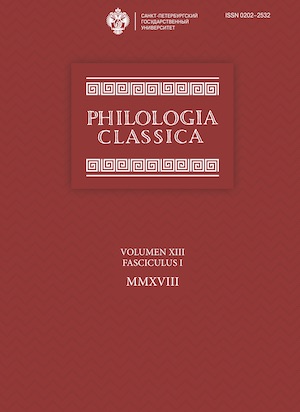Latein und die europäischen Volkssprachen in der frühen Neuzeit
DOI:
https://doi.org/10.21638/11701/spbu20.2018.108Abstract
The Latin of the twentieth century, English allows us to experience to the full the many situations in which one has to switch between a mother tongue and a lingua franca. This article aspires to show that, contrary to the unhappy coinage ‘a dead language’, Latin was very much alive all through the early modern period and up to the early nineteenth century, being a means of communication for the people of various social standing and not, as it is largely preconceived today, a skills kit to exercise one’s intellectual capacities. Latinity was a marker of social standing, of belonging, but in an individual speaker, it did not exist on an entirely different plane from the national dialects. It is believed that Latin fell into disuse with the rise of the national languages, their gradual progress through the system of education, and an urge for artistic expression of the new self-conscious nations. Once the need to bring this flux of spoken dialects in which the national languages naturally existed to a literary standard arose, Latin, to its undoing, offered its grammar as a paradigm. Once formal schooling came to be conducted in the national languages, Latin lost its ground never to recover it again.
Keywords:
Latin in an early modern period, Latin as a lingua franca, history of Latin
Downloads
References
Downloads
Published
How to Cite
Issue
Section
License
Articles of "Philologia Classica" are open access distributed under the terms of the License Agreement with Saint Petersburg State University, which permits to the authors unrestricted distribution and self-archiving free of charge.






